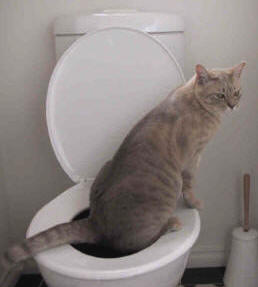Why Flushing Cat Poop Down Your Toilet Is Harmful - Tips for Correct Disposal
Why Flushing Cat Poop Down Your Toilet Is Harmful - Tips for Correct Disposal
Blog Article
The publisher is making several good pointers related to Can You Flush Cat Poop Down The Toilet? overall in the article down the page.

Introduction
As cat owners, it's necessary to be mindful of just how we take care of our feline close friends' waste. While it might appear convenient to purge cat poop down the commode, this technique can have harmful effects for both the atmosphere and human health and wellness.
Environmental Impact
Purging cat poop introduces unsafe microorganisms and bloodsuckers right into the supply of water, posing a significant danger to aquatic ecosystems. These contaminants can negatively affect marine life and compromise water top quality.
Health Risks
In addition to environmental problems, flushing pet cat waste can additionally present wellness risks to humans. Pet cat feces may have Toxoplasma gondii, a parasite that can create toxoplasmosis-- a potentially severe ailment, particularly for expectant women and people with damaged immune systems.
Alternatives to Flushing
Fortunately, there are safer and a lot more accountable methods to get rid of pet cat poop. Consider the adhering to alternatives:
1. Scoop and Dispose in Trash
The most typical technique of dealing with pet cat poop is to scoop it right into a naturally degradable bag and throw it in the garbage. Be sure to make use of a committed clutter inside story and take care of the waste quickly.
2. Usage Biodegradable Litter
Choose biodegradable pet cat clutter made from materials such as corn or wheat. These trashes are eco-friendly and can be safely taken care of in the trash.
3. Hide in the Yard
If you have a lawn, think about burying cat waste in a designated area far from veggie gardens and water resources. Make sure to dig deep sufficient to avoid contamination of groundwater.
4. Install a Pet Waste Disposal System
Invest in an animal waste disposal system especially created for feline waste. These systems use enzymes to break down the waste, lowering odor and ecological effect.
Conclusion
Accountable pet ownership expands beyond giving food and shelter-- it additionally entails proper waste monitoring. By refraining from purging pet cat poop down the commode and choosing alternate disposal methods, we can reduce our ecological impact and shield human health.
Why Can’t I Flush Cat Poop?
It Spreads a Parasite
Cats are frequently infected with a parasite called toxoplasma gondii. The parasite causes an infection called toxoplasmosis. It is usually harmless to cats. The parasite only uses cat poop as a host for its eggs. Otherwise, the cat’s immune system usually keeps the infection at low enough levels to maintain its own health. But it does not stop the develop of eggs. These eggs are tiny and surprisingly tough. They may survive for a year before they begin to grow. But that’s the problem.
Our wastewater system is not designed to deal with toxoplasmosis eggs. Instead, most eggs will flush from your toilet into sewers and wastewater management plants. After the sewage is treated for many other harmful things in it, it is typically released into local rivers, lakes, or oceans. Here, the toxoplasmosis eggs can find new hosts, including starfish, crabs, otters, and many other wildlife. For many, this is a significant risk to their health. Toxoplasmosis can also end up infecting water sources that are important for agriculture, which means our deer, pigs, and sheep can get infected too.
Is There Risk to Humans?
There can be a risk to human life from flushing cat poop down the toilet. If you do so, the parasites from your cat’s poop can end up in shellfish, game animals, or livestock. If this meat is then served raw or undercooked, the people who eat it can get sick.
In fact, according to the CDC, 40 million people in the United States are infected with toxoplasma gondii. They get it from exposure to infected seafood, or from some kind of cat poop contamination, like drinking from a stream that is contaminated or touching anything that has come into contact with cat poop. That includes just cleaning a cat litter box.
Most people who get infected with these parasites will not develop any symptoms. However, for pregnant women or for those with compromised immune systems, the parasite can cause severe health problems.
How to Handle Cat Poop
The best way to handle cat poop is actually to clean the box more often. The eggs that the parasite sheds will not become active until one to five days after the cat poops. That means that if you clean daily, you’re much less likely to come into direct contact with infectious eggs.
That said, always dispose of cat poop in the garbage and not down the toilet. Wash your hands before and after you clean the litter box, and bring the bag of poop right outside to your garbage bins.
https://trenchlesssolutionsusa.com/why-cant-i-flush-cat-poop/

As a fervent person who reads about How to Dispose of Cat Poop and Litter Without Plastic Bags, I figured sharing that excerpt was essential. Enjoyed reading our write up? Please share it. Help other people find it. I appreciate reading our article about Can You Flush Cat Poop Down The Toilet?.
Book-Now Report this page